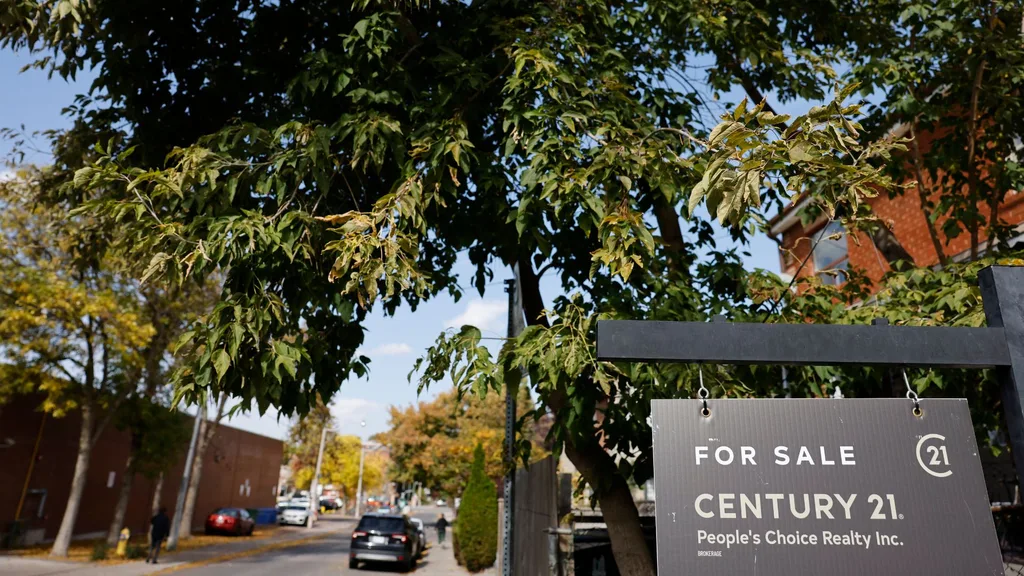Looking to buy your first property? Victoria Devine has got you covered.
The retired financial advisor and host of She’s On The Money has earnt a cult-following thanks to her digestible and empowering guide to financial literacy.
Now, she’s imparting her wisdom on all-things property, with her first-home buyer’s bible, Property With ‘She’s On The Money’. Here, Devine shares with marie claire Australia her expert guide to finding your first property, from choosing a location, to insurance risks, and everything in-between.
What to look for in a property
We’ve all heard the advice to ‘buy the worst house on the best street’ and no-one can miss the ‘location, location, location’ callouts that regularly feature in property listings. And it’s not just towns and suburbs you need to worry about. Even in a desirable suburb, there are more and less sought-after streets. Likewise, each block and building comes with a set aspect, which is equally important to consider.
The reason you see so many ‘north-facing’ lines spruiked in property listings is that, in Australia, this aspect is golden. (Literally.) Aspect affects how much light and warmth your property receives, and north-facing beauties win out. As much as we’d love it, we don’t have the power to change the direction of the sun, so if you buy a place that faces south, it’s guaranteed to be darker and colder than its north-facing neighbour. How much an aspect affects you will change during the course of the year, as the sun travels lower in the sky over a shorter period in winter. And beware a stunning sunset view – on long and late summer evenings, the heat and glare from that same aspect can be truly
hideous.

The thing is: you can renovate, but you can’t change the location or aspect of the property. Over time, it’s normal to expect that, thanks to wear and tear and changing styles, the value of buildings on your property will decline. However, if you’ve bought well, the land will, ideally, appreciate. That’s certainly what the bulk calculations on capital growth are based around. A particular risk is falling in love with a specific build or finish. If the location is
poor, the chances of your property gaining in value are limited.
Location, location, location
Determining what makes a good location is different for everyone and is entirely dependent on your property strategy. The perfect location of your forever home may be vastly different from your ideal investment, or even your great-for-now first home, so it’s important that you understand your goals. Is generating an immediate income the most important thing, or is it the potential capital growth, or is it to live in the bush far away from anyone and be self-sufficient? The strategies we’d develop for each of these is substantially different. Get clear on your goals before you start hunting around and save yourself time and heartache.
City or country? Depends! In either case, look for indicators of strong economic performance. In regional areas this could centre around a university or hospital or primary production – ideally, all with future development in the pipeline. Some regions are earmarked for development at a federal level. It’s all about the long-term economic fundamentals of a place.

Accessibility. While it might be your dream to live far from the madding crowds, the vast majority of people need access to work. This may decline as technology (and pandemics) encourage remote working, but humans are social creatures, so the pull of central locations will likely remain strong. Holiday home locations seem ideal, but the further afield they are, the less strong their immediate capital growth is likely to be.
Common sense. Ask yourself: would you live here? Even if you never intend to, this question will help. If a place is poky, mouldy, with only one sink and sporadic running water, then it probably won’t be appealing to anybody. While it’s a good rule of thumb not to get emotionally attached to an investment purchase – that means letting the data do the talking, not ignoring basic standards of living – as a good landlord, you should always keep your tenants in mind.
Look around. Who’s hanging in the hood? Is it families – young/old or elderly, empty nesters or young professionals? What’s their lifestyle and what kind of housing do they want/need? Obviously what works for families (four beds, sprawling lawns, large garage) is very different to urban singles (studio apartment with high walkability) or an ageing population (no stairs, please!).
Local industry. How do people earn a living, locally? Are newly minted craft breweries shoring up the growth, or are long-term producers the mainstay? Is it a central urban hub or regional? Ideally, there’ll be a variety of industries, key services (health, education) and manufacturing and distribution, as well as whitecollar work, to sustain a broad population.

Finding the halo
It’s easy to have a dream suburb or location – we all have one – but as we’ve discussed at length, the chances of that happening for us as first home buyers is reasonably slim.
Of course, different regions and areas have different prices. Even within states or cities and even suburbs, different locations will skew your property prices. Deciding where and what to buy, and your timing, are all important to consider. Historically, most places in Australia have increased in value over the long-term, but you might be wanting to see capital growth well before your 30-year mortgage is paid off, so a clear plan is important.
If you’re buying to live and you’re determined to live close to your dream suburb but can’t afford it, then it could be as simple as expanding your location radius – something we’re all too familiar with in recent years for other, unmentionable reasons. In the case of property hunting, this can be a super-savvy approach with extra benefits down the line. See, an established popular suburb or town will already have experienced its hockey-stick growth in
housing prices, making it both less affordable to buy into and less likely to see further sharp rises.
However, these high-performance locations tend to confer a ‘halo effect’ on surrounding areas, as buyers keen to live locally are happy to reside on the fringes at a price they can afford. Over time, with population growth, the neighbouring suburbs typically become absorbed into the values of the initial premium suburb. If you can get in before this happens, you will experience the uplift.
That’s not to say this is guaranteed, for owner-occupiers or investors. Many an unlucky investor has been hooked into believing an area is on the brink of rapid growth only to have their investment languish in the doldrums for a decade. This is especially true of off-the-beaten-path towns earmarked for mining or other developments that never get off the ground or fail to grow in the ways predicted. So, expand your search by all means, but stay smart about it.

Investment in infrastructure
One way to determine if an area has high-growth potential is to review both the existing and forecast industries operating in and around the area. If your suburb or town is close to or serviced by healthcare (hospitals), education (universities) and supports at least a couple of major industries (say, agriculture and/or mining and/or established tourism), these are signs of a solid population with potential to grow.
Larger communities require infrastructure: roads, hospitals, schools, telecommunications. A good location prospect will have government funds committed to projects that are in the construction pipeline. Since the benefits of these services have yet to be realised, the major uplift in property values may not yet have happened, but once the services are operational and their benefits obvious, more residents will be attracted to the area.
That said, it’s equally important to be aware of the flipside. Certain development can have a detrimental effect on property pricing. International airports are a good example. While such a large service may ultimately have a positive effect on local employment rates, it will also bring in noise and traffic, upsetting the lifestyle that had previously been enjoyed. During planning and construction and in the early years of operation, this could bring property values down. Over the longer term, its benefits may ultimately outweigh the downside and be an overall plus for your investment.
In either case, the area will never again be what it once was: a peaceful, rural enclave . . . If that was the dream you were buying into, say goodbye. I think the message is pretty clear on this one – it pays to be fully aware of any planned future developments in your area, both for good and bad down the line.

Check the insurance risk
Sadly, something increasingly important to be aware of is how insurable the property is. With natural disasters increasing in size, scale and frequency, insurers are becoming more careful in assessing a location’s insurance risk. Just because a house has stood in a certain location for 100 years does not necessarily make it a safe bet today. Because of the changing weather conditions, many places close to rivers and flood plains are no longer considered reliably safe. The same goes for properties in bushy areas that are prone to fire.
One of the costs you must factor into your home ownership budget is ongoing upkeep and maintenance as well as damage repair, and sometimes, full replacement. If your place was destroyed by a disaster – man-made, natural or extraterrestrial (c’mon, they’re out there) – could you afford to replace it without the help of insurance?
Even if you’re a fully committed risk-averse insurance-loving diehard and have budgeted keenly for your premiums, it’s worth checking with an insurer: can I even get this place insured in the first place? Based on a Climate Valuation report, the Guardian reported a list of Australian suburbs with a high proportion of ‘high risk’ properties, Port Melbourne, Brisbane City and Surfers Paradise among them.
Already, post the 2022 floods, residents in towns like Forbes are finding their new insurance premiums prohibitively expensive. So, do your homework and never assume. The costs to insure may be more than you think, even if you’re willing to pay for them.
This is an extract from Property With ‘She’s On The Money’, by Victoria Devine, published by Penguin.










